Whether you are an expectant parent, a new parent, or a seasoned parent, looking for a parenting book that resonates with your beliefs can be almost as overwhelming as parenting itself. The choices are practically endless when it comes to mainstream (read: punitive) parenting guides. In fact, if you go to the library or browse the shelves at Barnes & Noble or check out Amazon’s best-sellers in the parenting genre, you will find a predominance of popular, punishment-based, obedience-focused parenting guides. But when it comes to parenting guides with positive, practical, effective alternatives to punitive parenting, the choices are a bit more limited and can be harder to find. Here are more than a dozen positive parenting books for you that have beat the odds and worked their way through the maze of mainstream punitive parenting guides to become best-sellers:
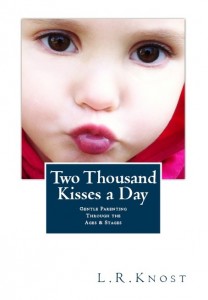 Two Thousand Kisses a Day: Gentle Parenting Through the Ages and Stages by L.R.Knost
Two Thousand Kisses a Day: Gentle Parenting Through the Ages and Stages by L.R.Knost
Calm, Reassuring, Likable ~ Written in L.R.Knost’s signature easy-to-read and conversational style, ‘Two Thousand Kisses a Day’ offers an overview of gentle parenting from birth through young adulthood along with concrete suggestions and insights into how to implement gentle parenting in each stage of childhood. Her seasoned and practical approach based on extensive child development research and years of parent mentoring as well as over twenty-five years of parenting her six children is as likable as it is reassuring. Parents with children of any age will find this information-packed book with its bite-sized chapters and practical approach to parenting a helpful and encouraging addition to their home library, as well as a welcome gift for new or struggling parents. ~The Parenting Review
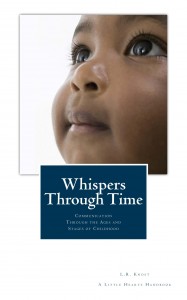 Whispers Through Time: Communication Through the Ages and Stages of Childhood by L.R.Knost
Whispers Through Time: Communication Through the Ages and Stages of Childhood by L.R.Knost
Sweet, Funny, Insightful ~ Award-winning ‘Whispers Through Time’ by L.R. Knost is destined to be a dog-eared favorite, passed down from generation to generation. L.R. Knost shows parents how to find their own answers for their own children and their own families in this guidebook as she challenges conventional thinking with a wisdom born of experience and a healthy dose of research to back it up. Written with the same unique blend of sweetness and humor, grit and honesty, reassurance and insight that made L.R. Knost’s first book, ‘Two Thousand Kisses a Day: Gentle Parenting Through the Ages and Stages,’ a best-seller, ‘Whispers Through Time’ has become a runaway hit in its own right. ~The Parenting Review
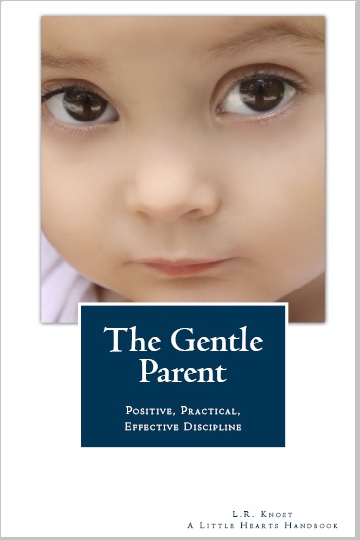 The Gentle Parent: Positive, Practical, Effective Discipline by L.R.Knost
The Gentle Parent: Positive, Practical, Effective Discipline by L.R.Knost
Relaxed, Reassuring, Practical ~ Written by L.R.Knost, best-selling, award-winning author of ‘Two Thousand Kisses a Day’ and ‘Whispers Through Time,’ ‘The Gentle Parent: Positive, Practical, Effective Discipline’ shares the simple secrets of a peaceful, happy home in the Three C’s of gentle discipline–Connection, Communication, and Cooperation. In her signature relaxed and poetic style, L.R.Knost gently guides parents through the steps of applying the Three C’s in real-life scenarios from tantrums to defiance to parenting a strong-willed child to healing a broken parent/child relationship. Practical and
proven, this newest installment in the Little Hearts Handbook parenting series will be tucked into diaper bags, kept handy on nightstands, and shared with good friends for its research-backed, experience-based, and humor-rich insights, ideas, and inspiration. ~The Parenting Review

Jesus, the Gentle Parent: Gentle Christian Parenting by L.R.Knost
Intelligent, Well-Researched, Compassionate ~ L.R.Knost has done it again. With her compassionate tone, relational style, and intelligent, well-researched writing, Jesus, the Gentle Parent is like a refreshing, peaceful walk through the scriptures with a friendly and knowledgeable tour guide. This book differs from Two Thousand Kisses a Day, Whispers Through Time, and The Gentle Parent: Positive, Practical, Effective Discipline in that it takes a Christian approach to parenting as L.R. takes on big names in the Christian child-training sect such as Dr. James Dobson, Tedd Tripp, Gary Ezzo, and Michael Pearl, breaking down their doctrine and reexamining such issues as spanking, instant obedience, submission, free will, and more in light of the original Hebrew and Greek texts of the scriptures. As always, L.R. offers gentle parenting alternatives along with real-life examples of their applications, but in Jesus, the Gentle Parent she goes even further and shares parenting insights based on the life of Jesus that will turn the mainstream Christian world on its head. This is truly a grace-based parenting book which shows parents how to be “their children’s first taste of God” by following in the gentle, wise, grace-filled footsteps of Jesus. ~ The Parenting Review
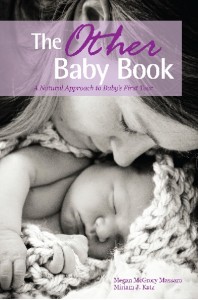 The Other Baby Book: A Natural Approach to Baby’s First Year by Megan McGrory Massaro and Miriam J. Katz
The Other Baby Book: A Natural Approach to Baby’s First Year by Megan McGrory Massaro and Miriam J. Katz
Massaro and Katz are helping mothers reclaim a simpler, more connected first year with their babies. Readers will find eight fun-to-read chapters filled with baby-friendly practices, along with stories from moms in-the-know. In a soothing yet sassy voice, the authors present compelling research on topics like birth, holding your baby, breastfeeding, infant sleep, pottying babies (yes, really!), sign language, baby-led solids, and self-care for moms. The book also features contributions from leading practitioners in baby care: Dr. James McKenna, Dr. Janet Zand, Naomi Aldort, Gill Rapley, Nancy Mohrbacher, and more.
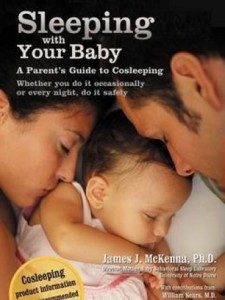 Sleeping with Your Baby: A Parent’s Guide to Cosleeping by James J. McKenna
Sleeping with Your Baby: A Parent’s Guide to Cosleeping by James J. McKenna
Intelligent, respectful, and informative, ‘Sleeping With Your Baby: A Parent’s Guide’ is your guide to understanding how to make night-times with your baby safe, fun and relaxing! Written by the world’s foremost authority on co-sleeping, James J. McKenna, Ph.D. Professor of Biological Anthropology, Director, Mother-Baby Sleep Laboratory, University of Notre.
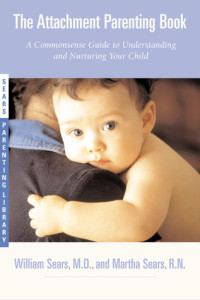 The Attachment Parenting Book : A Commonsense Guide to Understanding and Nurturing Your Baby by William Sears and Martha Sears
The Attachment Parenting Book : A Commonsense Guide to Understanding and Nurturing Your Baby by William Sears and Martha Sears
Might you and your baby both sleep better if you shared a bed? How old is too old for breastfeeding? What is a father’s role in nurturing a newborn? How does early attachment foster a child’s eventual independence? Dr. Bill and Martha Sears — the doctor-and-nurse, husband-and-wife team who coined the term “attachment parenting” — answer these and many more questions in this practical, inspiring guide. Attachment parenting is a style of parenting that encourages a strong early attachment, and advocates parental responsiveness to babies’ dependency needs. “The Attachment Parenting Book” clearly explains the six “Baby B’s” that form the basis of this increasingly popular parenting style: Bonding, Breastfeeding, Babywearing, Bedding close to baby, Belief in the language value of baby’s cry, Beware of baby trainers. Here’s all the information you need to achieve your most important goals as a new parent: to know your child, to help your child feel right, and to enjoy parenting.
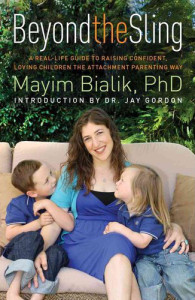 Beyond the Sling by Mayim Bialik
Beyond the Sling by Mayim Bialik
Attachment parenting rests on one revolutionary principle: you already know the majority of what you need to know to be an incredible parent. Popularized by physicians like Dr. William Sears and Dr. Jay Gordon, attachment parenting directly contradicts the two hundred years of Western culture that has convinced us that we need a lot of help: help giving birth; help “teaching” our baby to sleep; help just being a parent. ‘Beyond the Sling’ is not that kind of parenting book.
Mayim Bialik shows us that by understanding the basic theories of attachment and infant development—and incorporating age-old childrearing methods like breastfeeding, baby wearing, gentle discipline, and co-sleeping—we can truly be the parents that nature intends us to be. With a PhD in neuroscience and a specialization in the hormones of attachment, Bialik is uniquely qualified to explain the science behind the method and how it’s your evolutionary right to tap into your intuition and enjoy every stage of parenthood. A mother of two young boys, she also offers a firsthand account of how she came to follow the tenets of attachment parenting, plus a down-to-earth guide to making this lifestyle work for every kind of family.
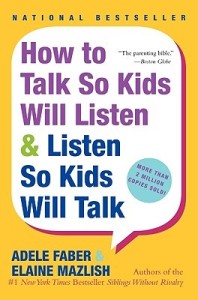 How To Talk So Kids Will Listen & Listen So Kids Will Talk by Adele Faber and Elaine Mazlish
How To Talk So Kids Will Listen & Listen So Kids Will Talk by Adele Faber and Elaine Mazlish
This bestselling classic includes fresh insights and suggestions as well as the author’s time-tested methods to solve common problems and build foundations for lasting relationships, including innovative ways to:
-Cope with your child’s negative feelings, such as frustration, anger, and disappointment
-Express your strong feelings without being hurtful
-Engage your child’s willing cooperation
-Set firm limits and maintain goodwill
-Use alternatives to punishment that promote self-discipline
-Understand the difference between helpful and unhelpful praise
-Resolve family conflicts peacefully
Enthusiastically praised by parents and professionals around the world, the down-to-earth, respectful approach of Faber and Mazlish makes relationships with children of all ages less stressful and more rewarding.
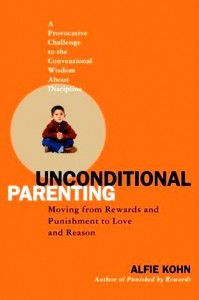 Unconditional Parenting: Moving from Rewards and Punishments to Love and Reason by Alfie Kohn
Unconditional Parenting: Moving from Rewards and Punishments to Love and Reason by Alfie Kohn
In this truly groundbreaking book, nationally respected educator Alfie Kohn begins instead by asking, “What do kids need — and how can we meet those needs?” What follows from that question are ideas for working with children rather than doing things to them.
One basic need all children have, Kohn argues, is to be loved unconditionally, to know that they will be accepted even if they screw up or fall short. Yet conventional approaches to parenting such as punishments (including “time-outs”), rewards (including positive reinforcement), and other forms of control teach children that they are loved only when they please us or impress us. Kohn cites a body of powerful, and largely unknown, research detailing the damage caused by leading children to believe they must earn our approval. That’s precisely the message children derive from common discipline techniques, even though it’s not the message most parents intend to send.
More than just another book about discipline, though, Unconditional Parenting addresses the ways parents think about, feel about, and act with their children. It invites them to question their most basic assumptions about raising kids while offering a wealth of practical strategies for shifting from “doing to” to “working with” parenting — including how to replace praise with the unconditional support that children need to grow into healthy, caring, responsible people. This is an eye-opening, paradigm-shattering book that will reconnect readers to their own best instincts and inspire them to become better parents.
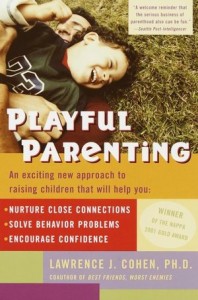 Playful Parenting by Lawrence J. Cohen
Playful Parenting by Lawrence J. Cohen
Have you ever stepped back to watch what really goes on when your children play? As psychologist Lawrence J. Cohen points out, play is children’s way of exploring the world, communicating deep feelings, getting close to those they care about, working through stressful situations, and simply blowing off steam. That’s why “playful parenting” is so important and so successful in building strong, close bonds between parents and children. Through play we join our kids in their world–and help them to:
-Express and understand complex emotions
-Break through shyness, anger, and fear
-Empower themselves and respect diversity
-Play their way through sibling rivalry
-Cooperate without power struggles
From eliciting a giggle during baby’s first game of peekaboo to cracking jokes with a teenager while hanging out at the mall, Playful Parenting is a complete guide to using play to raise confident children. Written with love and humor, brimming with good advice and revealing anecdotes, and grounded in the latest research, this book will make you laugh even as it makes you wise in the ways of being an effective, enthusiastic parent.
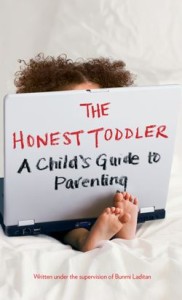 The Honest Toddler: A Child’s Guide to Parenting by Bunmi Laditan
The Honest Toddler: A Child’s Guide to Parenting by Bunmi Laditan
The Honest Toddler provides an indispensable manual to parenting that places the toddler’s happiness front and center. Outrageously confident and sweetly indignant, the Honest Toddler tackles everything from preferred toddler foods (unbroken crackers and undiluted juice), sleep- and potty-training methods (none), playdate etiquette (mi casa es not su casa), and the proper response to random aggression at the playground (Embrace it. Park justice is messy but swift).
The result is a parenting book like no other, one that will leave moms and dads laughing, and maybe crying, as they recognize their own child in the ongoing shenanigans of one bravely honest toddler. Lighthearted and tongue-in-cheek, this toddler’s eye-view is a real eye-opener for parents, giving valuable insight into the inner workings of the toddler mind.
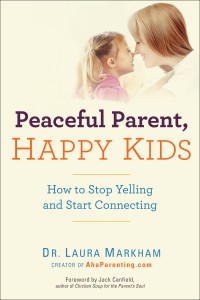 Peaceful Parent, Happy Kids: How to Stop Yelling and Start Connecting by Laura Markham
Peaceful Parent, Happy Kids: How to Stop Yelling and Start Connecting by Laura Markham
A groundbreaking guide to raising responsible, capable, happy kids…Based on the latest research on brain development and extensive clinical experience with parents, Dr. Laura Markham’s approach is as simple as it is effective. Her message: Fostering emotional connection with your child creates real and lasting change. When you have that vital connection, you don’t need to threaten, nag, plead, bribe—or even punish.
This remarkable guide will help parents better understand their own emotions—and get them in check—so they can parent with healthy limits, empathy, and clear communication to raise a self-disciplined child. Step-by-step examples give solutions and kid-tested phrasing for parents of toddlers right through the elementary years.
If you’re tired of power struggles, tantrums, and searching for the right “consequence,” look no further. You’re about to discover the practical tools you need to transform your parenting in a positive, proven way.
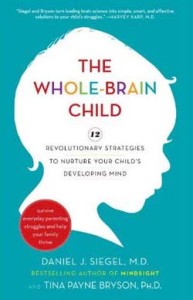 The Whole-Brain Child: 12 Revolutionary Strategies to Nurture Your Child’s Developing Mind by Daniel J. Siegel and Tina Payne Bryson
The Whole-Brain Child: 12 Revolutionary Strategies to Nurture Your Child’s Developing Mind by Daniel J. Siegel and Tina Payne Bryson
In this pioneering, practical book, Daniel J. Siegel, neuropsychiatrist and author of the bestselling Mindsight, and parenting expert Tina Payne Bryson offer a revolutionary approach to child rearing with twelve key strategies that foster healthy brain development, leading to calmer, happier children. The authors explain—and make accessible—the new science of how a child’s brain is wired and how it matures. The “upstairs brain,” which makes decisions and balances emotions, is under construction until the mid-twenties. And especially in young children, the right brain and its emotions tend to rule over the logic of the left brain. No wonder kids throw tantrums, fight, or sulk in silence. By applying these discoveries to everyday parenting, you can turn any outburst, argument, or fear into a chance to integrate your child’s brain and foster vital growth.
Complete with age-appropriate strategies for dealing with day-to-day struggles and illustrations that will help you explain these concepts to your child, The Whole-Brain Child shows you how to cultivate healthy emotional and intellectual development so that your children can lead balanced, meaningful, and connected lives.
 Bloom: Helping Children Blossom by Lynne Kenney and Wendy Young
Bloom: Helping Children Blossom by Lynne Kenney and Wendy Young
A Lovely Listopia of Practical Approaches to Behavioral Issues ~ From Pediatric Psychologist Dr. Lynne Kenney and Behavioral Specialist Wendy Young, ‘Bloom: Helping Children Blossom’ is an excellent resource for parents, teachers, and caregivers. ‘Bloom’ provides insights into the emotional development of children, offers specific ‘scripts’ for how to communicate effectively when dealing with behavioral issues, challenges parents to examine their own emotional responses, and provides detailed professional resources for parents who feel their children may need therapeutic assistance and support. Down to earth and practical, ‘Bloom’ is refreshingly written in an approachable, conversational style that makes its resources as accessible as they are invaluable.
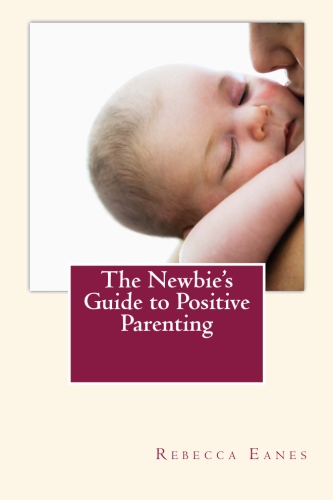 The Newbie’s Guide to Positive Parenting by Rebecca Eanes
The Newbie’s Guide to Positive Parenting by Rebecca Eanes
Do you want to create a more positive and peaceful home? Are you tired of parenting formulas and techniques that just don’t work and leave you feeling at odds with your child? Learn the 5 principles of positive parenting and discover how to bring connection and peace back into your relationship with your child. You’ll learn a new way in which to relate to your child, one which fosters connection rather than disconnection, respect rather than rebellion, and cultivates a healthy relationship which you can enjoy throughout the years.
Written by best-selling author, blogger, and the founder of Positive-parents.org whose Facebook community is more than 40,000 strong, Rebecca Eanes is not a typical parenting ‘expert’ but writes parent to parent with the inspiring message of creating peaceful homes through positive parenting.
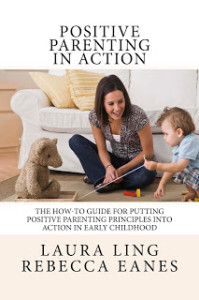 Positive Parenting in Action: The How-To Guide for Putting Positive Parenting Principles into Action in Early Childhood by Laura Ling and Rebecca Eanes
Positive Parenting in Action: The How-To Guide for Putting Positive Parenting Principles into Action in Early Childhood by Laura Ling and Rebecca Eanes
Parenthood is a beautiful journey. We don’t have to become adversaries with our children; doing so is very unnatural to our humanity. We are all wired for connection, for closeness, and for love. Positive parenting frees us to move from the traditional parenting roles which create friction and rebellion and allows us instead to move into a more natural role which creates cooperation and peace. The inevitable conflicts that arise in a relationship no longer define the relationship, but serve as stepping-stones to greater understanding and connection.
There is an abundance of resources available which tell parents why traditional parenting practices are not optimal, but few help parents learn what to do in place of traditional practices. In this book, we’ll discuss the principles of positive parenting, and then we will go through more than 40 scenarios to show you what it looks like when these principles are put into action.
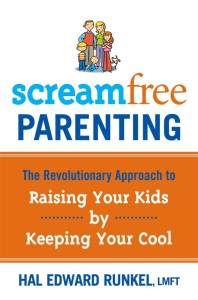 Screamfree Parenting: The Revolutionary Approach to Raising Your Kids by Keeping Your Cool by Hal Edward Runkel
Screamfree Parenting: The Revolutionary Approach to Raising Your Kids by Keeping Your Cool by Hal Edward Runkel
ScreamFree Parenting is not just about lowering your voice. It’s about learning to calm your emotional reactions and learning to focus on your own behavior more than your kids’ behavior . . . for their benefit. Our biggest enemy as parents is not the TV, the Internet, or even drugs. Our biggest enemy is our own emotional reactivity. When we say we “lost it” with our kids, the “it” in that sentence is our own adulthood. And then we wonder why our kids have so little respect for us, why our kids seem to have all the power in the family. It’s time to do it differently. And you can. You can start to create and enjoy the types of calm, mutually respectful, and loving relationships with your kids that you’ve always craved. You can begin to revolutionize your family, starting tonight.
Parenting is not about kids, it’s about parents. If you’re not in control, then you cannot be in charge. What every kid really needs are parents who are able to keep their cool no matter what. Easier said than done? Not anymore, thanks to ‘ScreamFree Parenting’ the principle-based approach that’s inspiring parents everywhere to truly revolutionize their family dynamics. Moving beyond the child-centered, technique-based approaches that ultimately fail, the ScreamFree way compels you to:
Focus on yourself ~ Calm yourself down ~ Grow yourself up
By staying calm and connected with your kids, you begin to operate less out of your deepest fears and more out of your highest principles, revolutionizing your relationships in the process.
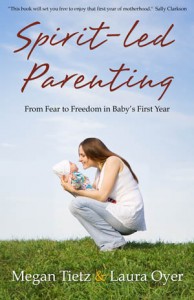 Spirit-Led Parenting: From Fear to Freedom in Baby’s First Year by Megan Tietz and Laura Oyer
Spirit-Led Parenting: From Fear to Freedom in Baby’s First Year by Megan Tietz and Laura Oyer
Over the years, a mainstream approach to Christian parenting has emerged, and it’s one that promotes sleep training and feeding schedules for infants, warns that spoiled children and marital discord are certain by-products of homes where newborns are over-indulged, and promotes these methods as the Biblical way to care for a new baby. Unfortunately, the message of mainstream parenting advice preys on the universal fear of new parents everywhere: the fear that if they stray from the program, their babies and their marriages will suffer.
In Spirit-Led Parenting: From Fear to Freedom in Baby’s First Year, two mothers share their stories. They tell of a journey that began in fear-soaked, tear-stained days marked by an overwhelming fear of failure that eventually found redemption in discovering the freedom to ignore the wisdom of man and follow the direction of the Spirit.
Sharing from their unique experiences as well as their shared philosophy, Megan and Laura play the role of big sisters, wrapping their arms around the shoulder of the new mother trying to navigate the confusing world of life with a baby and answering those important questions: “What if the ‘right’ way doesn’t feel ‘right’?” and “Could there be more than one way to honor God as I care for my baby?”
There is another way. That’s what they wish they had been told as new mothers. And it’s the message they are passionate about sharing with new parents everywhere.
 Attached at the Heart: Eight Proven Parenting Principles for Raising Connected and Compassionate Children by Barbara Nicholson and Lysa Parker
Attached at the Heart: Eight Proven Parenting Principles for Raising Connected and Compassionate Children by Barbara Nicholson and Lysa Parker
Practical parenting advice for the modern age…In its most basic form, “attachment parenting” is instinctive. A crying baby is comforted and kept close to parents for protection. If hungry, he or she is breastfed. And while it is understood that there is no such thing as perfect parenting, research suggests that there is a strong correlation between a heightened sense of respect, empathy, and affection in those children raised the “attachment parenting” way.
Using the Eight Principles of Parenting, readers will learn:
- How to prepare for baby before birth
- Why breastfeeding is a must for busy moms
- When to start feeding solid food
- How to respond to temper tantrums
- Sleeping safety guidelines and the benefits of cosleeping
- Tips for short separation
- How to practice positive discipline and its rewards
- Tips for finding and maintaining balance
- The benefits of using a baby sling and implementing infant massage
- Tips on dealing with criticism from those opposed or unfamiliar with AP style
- The dangers surrounding traditional discipline styles of parenting
Contrary to popular belief, “attachment parenting” has been practiced in one form or another since recorded history. Over the years, it had been slowly replaced by a more detached parenting style—a style that is now believed by experts to be a lead contributing factor to suicide, depression, and violence. The concept of “attachment parenting”—a term originally coined by parenting experts William and Martha Sears—has increasingly been validated by research in many fields of study, such as child development, psychology, and neuroscience. Also known as “conscious parenting,” “natural parenting,” “compassionate parenting,” or “empathic parenting,” its goal is to stimulate optimal child development. While many attachment-parenting recommendations likely counter popular societal
beliefs, authors Barbara Nicholson and Lysa Parker are quick to point out that the benefits outweigh the backlash of criticism that advocates of detached parenting may impose.
 Thy Rod and Thy Staff, They Comfort Me: Christians and the Spanking Controversy by Samuel S. Martin
Thy Rod and Thy Staff, They Comfort Me: Christians and the Spanking Controversy by Samuel S. Martin
Thorough, well-referenced, grounded in solid information, unquestionably scholarly, yet pleasurably readable, obviously written by a man with the deepest reverence for God’s Word and the responsibility of handling it accurately. This isn’t the work of a secular author who is trying to twist religious arguments to back himself up. It is the work of a brother in Christ who fully accepts the authority of Scripture. Honestly, I can’t imagine any serious student of the Bible reading this and still believing that spanking is Biblically endorsed. ~ Dulce de Leche
 Award-winnning author, L.R.Knost, is the founder and director of the children's rights advocacy and family consulting group, Little Hearts/Gentle Parenting Resources, and Editor-in-Chief of Holistic Parenting Magazine. Books by L.R.Knost include Whispers Through Time: Communication Through the Ages and Stages of Childhood ; Two Thousand Kisses a Day: Gentle Parenting Through the Ages and Stages ; The Gentle Parent: Positive, Practical, Effective Discipline ; and Jesus, the Gentle Parent: Gentle Christian Parenting the first four books in the Little Hearts Handbook gentle parenting series, and children’s picture books Petey’s Listening Ears and the soon-to-be-released Grumpykins series.
Award-winnning author, L.R.Knost, is the founder and director of the children's rights advocacy and family consulting group, Little Hearts/Gentle Parenting Resources, and Editor-in-Chief of Holistic Parenting Magazine. Books by L.R.Knost include Whispers Through Time: Communication Through the Ages and Stages of Childhood ; Two Thousand Kisses a Day: Gentle Parenting Through the Ages and Stages ; The Gentle Parent: Positive, Practical, Effective Discipline ; and Jesus, the Gentle Parent: Gentle Christian Parenting the first four books in the Little Hearts Handbook gentle parenting series, and children’s picture books Petey’s Listening Ears and the soon-to-be-released Grumpykins series.
 I’m so excited to share the release of The Gentle Parent: Positive, Practical, Effective Discipline, the third book in the Little Hearts Handbook series! The first reviews are in, and The Gentle Parent has already received 5-Star ratings and been called “food for a gentle parent’s soul” and “reassuring, relevant, and relatable for parents with children of all ages.” The Parenting Review shared this about The Gentle Parent:
I’m so excited to share the release of The Gentle Parent: Positive, Practical, Effective Discipline, the third book in the Little Hearts Handbook series! The first reviews are in, and The Gentle Parent has already received 5-Star ratings and been called “food for a gentle parent’s soul” and “reassuring, relevant, and relatable for parents with children of all ages.” The Parenting Review shared this about The Gentle Parent: Award-winnning author, L.R.Knost, is the founder and director of the children's rights advocacy and family consulting group, Little Hearts/Gentle Parenting Resources, and Editor-in-Chief of Holistic Parenting Magazine. Books by L.R.Knost include Whispers Through Time: Communication Through the Ages and Stages of Childhood ; Two Thousand Kisses a Day: Gentle Parenting Through the Ages and Stages ; The Gentle Parent: Positive, Practical, Effective Discipline ; and Jesus, the Gentle Parent: Gentle Christian Parenting the first four books in the Little Hearts Handbook gentle parenting series, and children’s picture books Petey’s Listening Ears and the soon-to-be-released Grumpykins series.
Award-winnning author, L.R.Knost, is the founder and director of the children's rights advocacy and family consulting group, Little Hearts/Gentle Parenting Resources, and Editor-in-Chief of Holistic Parenting Magazine. Books by L.R.Knost include Whispers Through Time: Communication Through the Ages and Stages of Childhood ; Two Thousand Kisses a Day: Gentle Parenting Through the Ages and Stages ; The Gentle Parent: Positive, Practical, Effective Discipline ; and Jesus, the Gentle Parent: Gentle Christian Parenting the first four books in the Little Hearts Handbook gentle parenting series, and children’s picture books Petey’s Listening Ears and the soon-to-be-released Grumpykins series. 
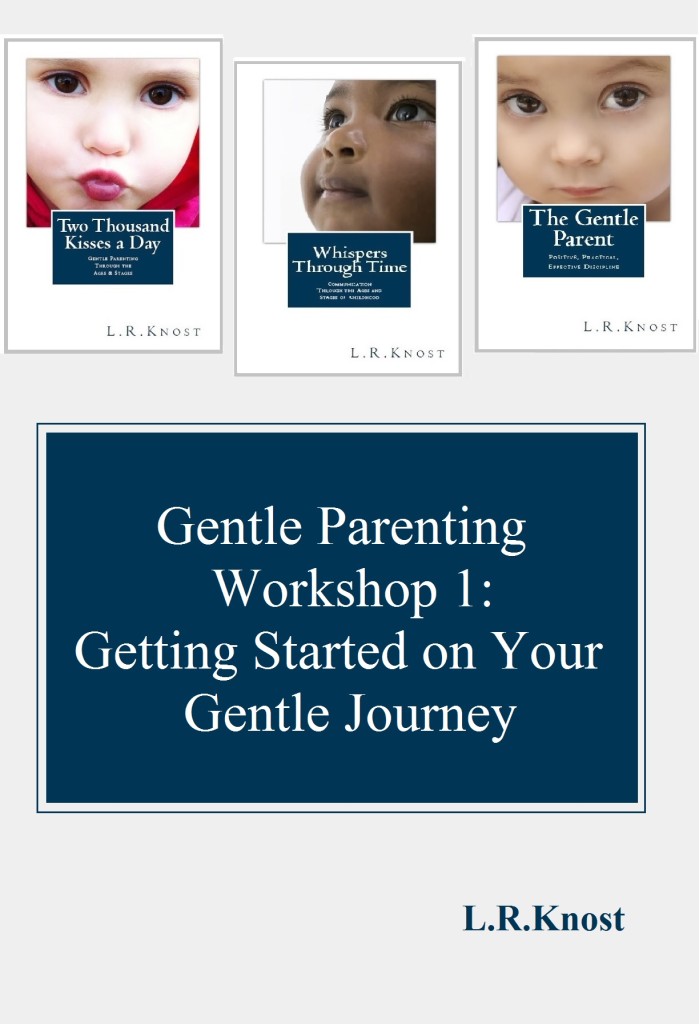
 Toddlers are infinitely curious little dynamos that may seem like clones of the Energizer Bunny…they keep going and going and going and…well, you get the idea! Even little ones who were supposedly ‘good’ sleepers in infancy often seem to lose the ability and/or the desire to sleep once they reach toddlerhood. Add a baby sibling (or one on the way!) to the mix, and you can find yourself right back to that zombie-mama state you thought you’d left behind after those first few exhausting newborn months. So what’s a zombie-mama to do? Here are a few tips to try and recapture some precious zzz’s for both yourself and your little one(s) and to turn those dreaded bedtime battles into peaceful bedtime snuggles:
Toddlers are infinitely curious little dynamos that may seem like clones of the Energizer Bunny…they keep going and going and going and…well, you get the idea! Even little ones who were supposedly ‘good’ sleepers in infancy often seem to lose the ability and/or the desire to sleep once they reach toddlerhood. Add a baby sibling (or one on the way!) to the mix, and you can find yourself right back to that zombie-mama state you thought you’d left behind after those first few exhausting newborn months. So what’s a zombie-mama to do? Here are a few tips to try and recapture some precious zzz’s for both yourself and your little one(s) and to turn those dreaded bedtime battles into peaceful bedtime snuggles:
 unique learner sit in a comfortable seat while pedaling. The cross-over action of pedaling also has an organizing effect on the brain, and, if used while reading or playing video games (Video games can be great exercises for eye-tracking if you choose the right ones!) can actually increase the speed and effectiveness of learning.
unique learner sit in a comfortable seat while pedaling. The cross-over action of pedaling also has an organizing effect on the brain, and, if used while reading or playing video games (Video games can be great exercises for eye-tracking if you choose the right ones!) can actually increase the speed and effectiveness of learning.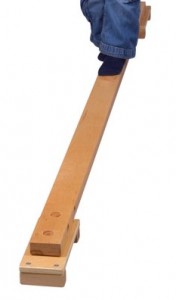

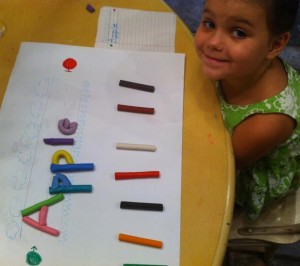
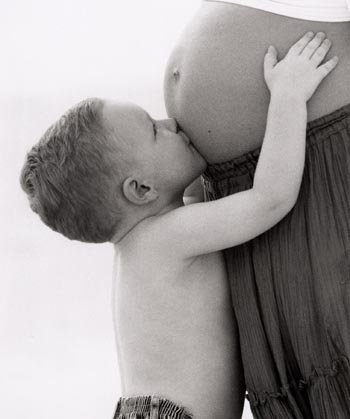 Pregnancy is a time of introspection, excitement, and, often, anxiety for most new mamas. When those new mamas also have other small children at home, that anxiety can become overwhelming as they worry about how they’ll cope with more than one child and how the current little loves of their life will cope with a new sibling. While these are very valid concerns, there are steps you can take to prepare your child for a new sibling and help them to adjust when the new baby arrives that will also help you to cope with life as a mama of more than one little blessing.
Pregnancy is a time of introspection, excitement, and, often, anxiety for most new mamas. When those new mamas also have other small children at home, that anxiety can become overwhelming as they worry about how they’ll cope with more than one child and how the current little loves of their life will cope with a new sibling. While these are very valid concerns, there are steps you can take to prepare your child for a new sibling and help them to adjust when the new baby arrives that will also help you to cope with life as a mama of more than one little blessing. Related posts:
Related posts:
 “She won’t share!”
“She won’t share!”  Ever have one of those days where you make all the ‘right’ parenting moves, but your children still act like children? (Do I hear a resounding “YES!!!” bouncing off the walls of cyberspace? Lol.) Of course we all have, and a whole lot more than just one day, too!
Ever have one of those days where you make all the ‘right’ parenting moves, but your children still act like children? (Do I hear a resounding “YES!!!” bouncing off the walls of cyberspace? Lol.) Of course we all have, and a whole lot more than just one day, too! The thing that people so often misunderstand, though, is that gentle parenting is not about stopping our children from being children. It’s about guiding our children through childhood with gentleness, compassion, and respect. It’s about viewing normal childhood behavior as normal, and working with our children in developmentally appropriate ways to teach and inspire and encourage them to become the extraordinary people they were created to be.
The thing that people so often misunderstand, though, is that gentle parenting is not about stopping our children from being children. It’s about guiding our children through childhood with gentleness, compassion, and respect. It’s about viewing normal childhood behavior as normal, and working with our children in developmentally appropriate ways to teach and inspire and encourage them to become the extraordinary people they were created to be. It’s seven o’clock and you’re finishing up the dishes before starting bedtime baths. And then it starts…the whining. Every. Single. Night. Your four-year-old knows the routine. She knows you are going to read her favorite bedtime book. She knows you will let her choose which pajamas to wear. She knows she has to brush her teeth. But that doesn’t stop her from standing in the kitchen night after night whining about the same things.
It’s seven o’clock and you’re finishing up the dishes before starting bedtime baths. And then it starts…the whining. Every. Single. Night. Your four-year-old knows the routine. She knows you are going to read her favorite bedtime book. She knows you will let her choose which pajamas to wear. She knows she has to brush her teeth. But that doesn’t stop her from standing in the kitchen night after night whining about the same things.



















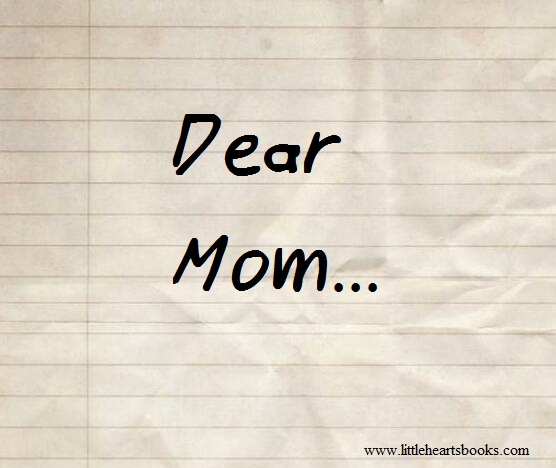 A gentle mama overseas gave me permission to share parts of our email exchange that spanned several months and ended with a deeply touching letter from her son:
A gentle mama overseas gave me permission to share parts of our email exchange that spanned several months and ended with a deeply touching letter from her son: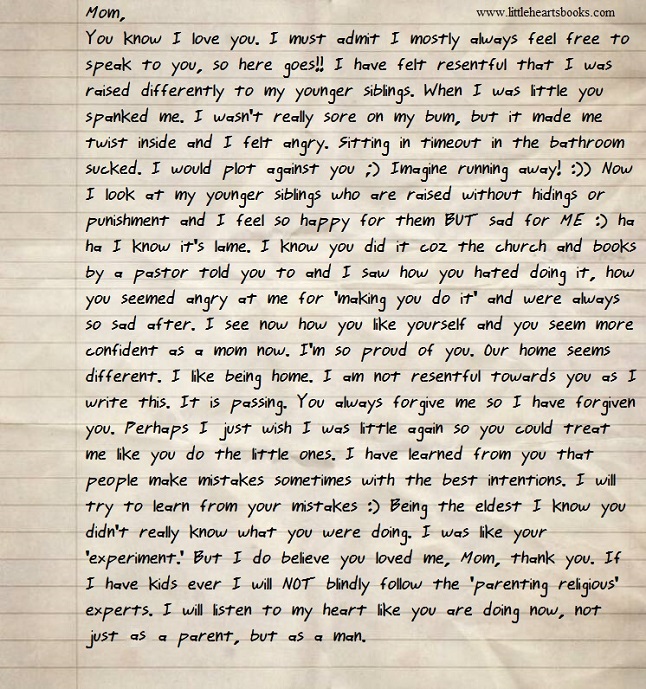 Oh, mama, that made me tear up. Your guy is more than okay. He’s brilliantly more than okay! He’s thoughtfully working through his feelings and sharing them with you honestly because he trusts you with his big emotions. And he’s extrapolating from his experiences and yours and coming up with a life plan based on a strength of character that is very, very evident in his writing. ♥
Oh, mama, that made me tear up. Your guy is more than okay. He’s brilliantly more than okay! He’s thoughtfully working through his feelings and sharing them with you honestly because he trusts you with his big emotions. And he’s extrapolating from his experiences and yours and coming up with a life plan based on a strength of character that is very, very evident in his writing. ♥






